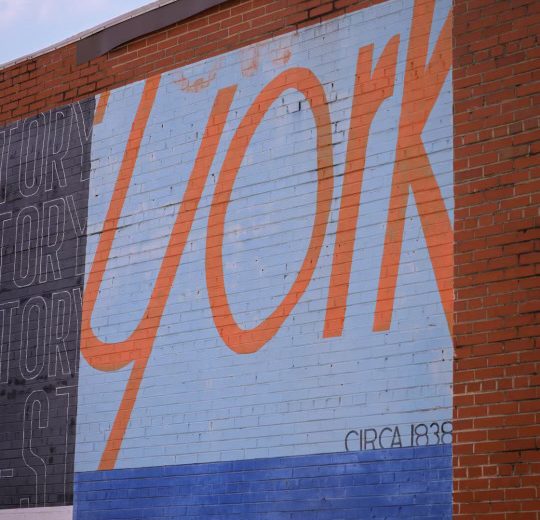
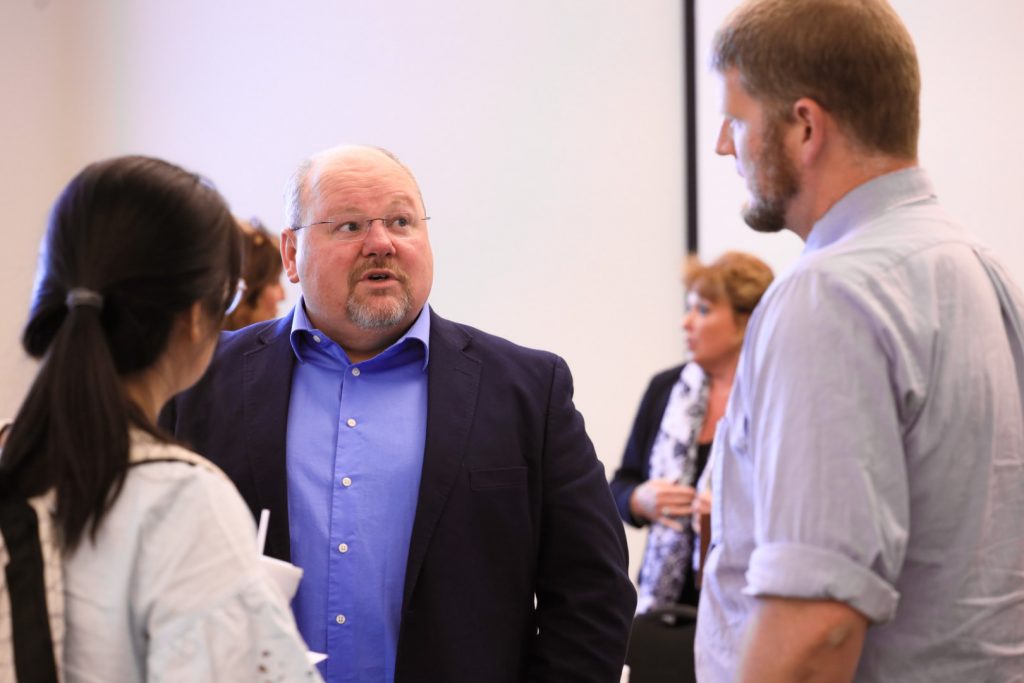
Author: Dr. Elisabetta Zengaro | Communications Specialist, Division of Community Affairs
After a two-year hiatus because of the COVID-19 pandemic, the Division of Community Affairs resumed its New Faculty Community Engagement Tour (NFCET), connecting University faculty, staff, graduate students and community members across various counties in the Black Belt region, Wednesday through Friday, May 11–13.
What I discovered with these tours, with our work and just with life in general, is that most people want to do things that make life better for someone else. Our purpose for these tours is part of the mission of The University of Alabama … to seek to improve the quality of life for folks in Alabama and beyond.
Said by Dr. Samory Pruitt, vice president for the Division of Community Affairs
Each day, faculty, staff and graduate students traveled by bus to a new area of the Black Belt and listened to panels of community leaders highlighting areas for collaboration in community-engaged scholarship.
Day 1
May 11thWalker, Pickens & Tuscaloosa Counties
Day 2
May 12thGreene, Sumter & Hale Counties
Day 3
May 13thPerry, Clarke & Dallas Counties

Day 1 – May 11thWalker, Pickens & Tuscaloosa Counties
The tour began at the historic First United Methodist Church in Jasper, the oldest church in the city and famous for its architectural style. This was also the tour’s first-ever stop in Jasper.
Downtown Jasper, Alabama
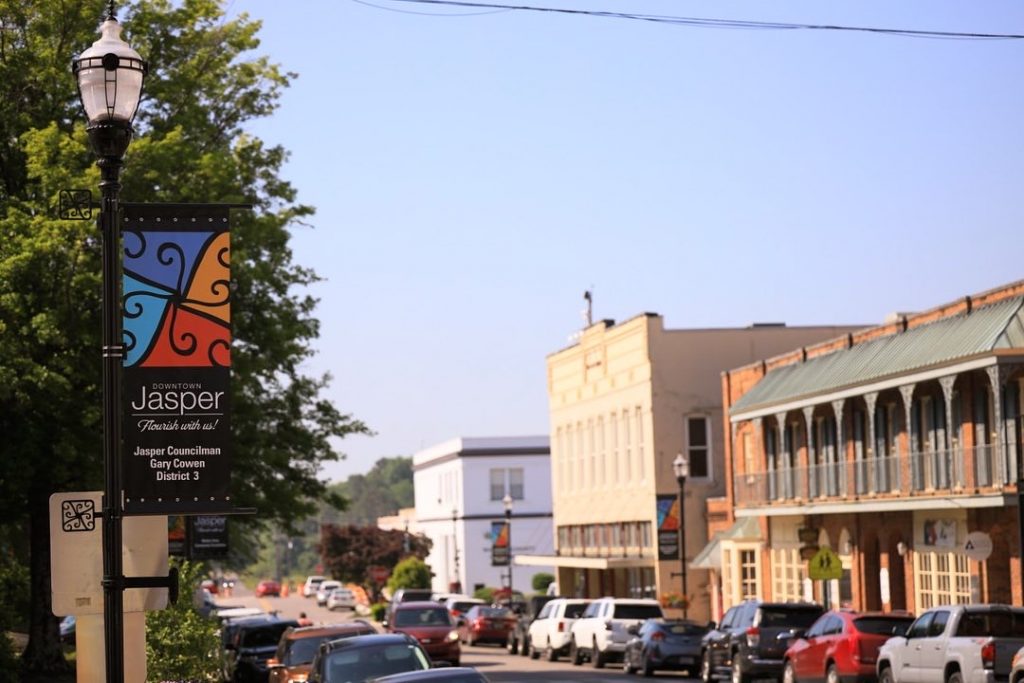
While Walker County experiences similar challenges that rural communities across the nation face, it has emerged as the center of the opioid epidemic in Alabama, providing additional barriers in health and wellness for residents to overcome.
Rachel Puckett, deputy director of Capstone Rural Health Clinic, shared how the Capstone has addressed community needs in health services, elaborating on the relevance and reciprocity of UA community partnerships.
In 2017, we had a project with University partners that equipped all our clinics with the competency, tools and staffing to serve our patients’ mental health needs. From there we were able to build on that model and integrate a medication assisted therapy program, which is a specific treatment program for folks with opioid use disorder into the primary care setting. Our community is the epicenter of the evolving opioid epidemic. It hit us hardest first, and we’re working diligently to be part of the solution … and create a model for our community.
Said by Puckett
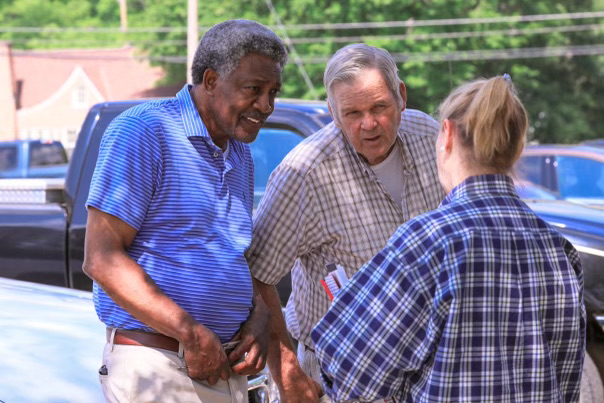
Healthcare also spearheaded the discussion in Carrollton, in Pickens County. Panelists highlighted the impact of “SMART (School Health Model for Academics Reaching All Transforming Lives) clinics” in improving access to healthcare, but they also stressed the need for more resources to address mental health and the challenges law enforcement officials face in Pickens County.
Networking time in Carrollton, Alabama
The first day concluded at City Hall in Northport, where City Administrator Glenda Webb led a discussion on economic growth and initiatives in Northport.
Group picture at the Northport City Hall
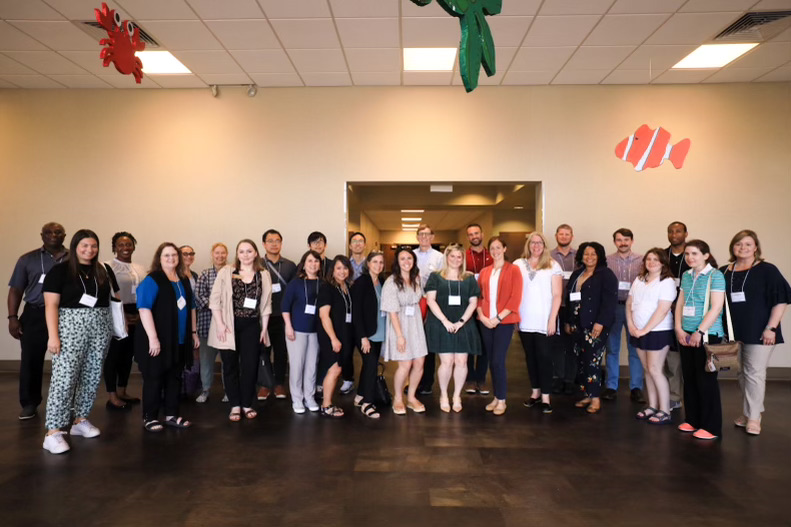
A purpose of the tour is to create meaningful relationships between university personnel and community members, and students participating in the tour expressed their eagerness to engage in this reciprocity.
I’m on this tour because I want to further my learning opportunities, my learning experiences. It doesn’t just stop for me with graduation on Saturday. It continues with experiences like these.
Said by Anika Ames, a student assistant in the Crossroads Civic Engagement Center

Day 2 – May 12thGreene, Sumter & Hale Counties
The first stop of the second day was in Greene County. Attendees gathered in the Robert H. Young Community Center in Eutaw, formerly known as Carver High School, the site of the historic 1965 student boycott and protest that took place during the height of the civil rights movement.
The bulk of the discussion centered on educational initiatives to strengthen the community, a theme that carried forward in other county stops. For example, Lillie Jones-Osborne, district judge for Greene County and chairman of the Greene County Children’s Policy Council, explained how the program “One Book, One Community” unites community members and improves literacy rates as each member of the community reads the same book for a period of time. Dr. Carol Zippert, of the Society of Folk Arts and Culture, added how the Black Belt Folk Roots Festival, which began in Eutaw in 1975, connects the community through art and music.
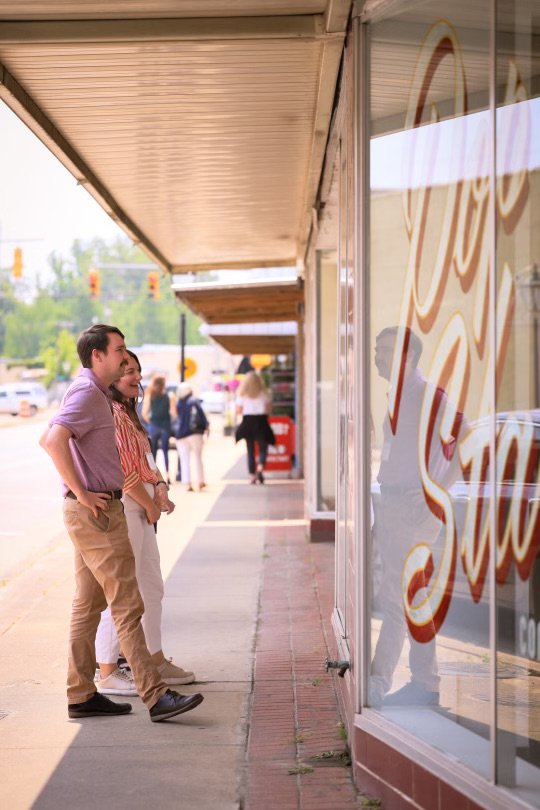
The group stopped for lunch in York, where panelists encouraged attendees to consider the economic impact of investing their educational skills into rural communities.
Partipants taking in the sights of downtown York, Alabama
Part of being educated is sharing that knowledge. It does no good to put a million dollars in a jar and never spend it to put back into the community. That knowledge that you’re getting at The University of Alabama is that millions of dollars. You have to take it out and invest it to get more back.
Said by local business owner Jeffrey Artis
Next, the tour proceeded to Project Horseshoe Farm in Greensboro where Jovita Lewis, Hale County coordinator for cooperative extension, shared the existing partnerships with UA and the Hale County Extension Office.
Downtown Greensboro, Alabama
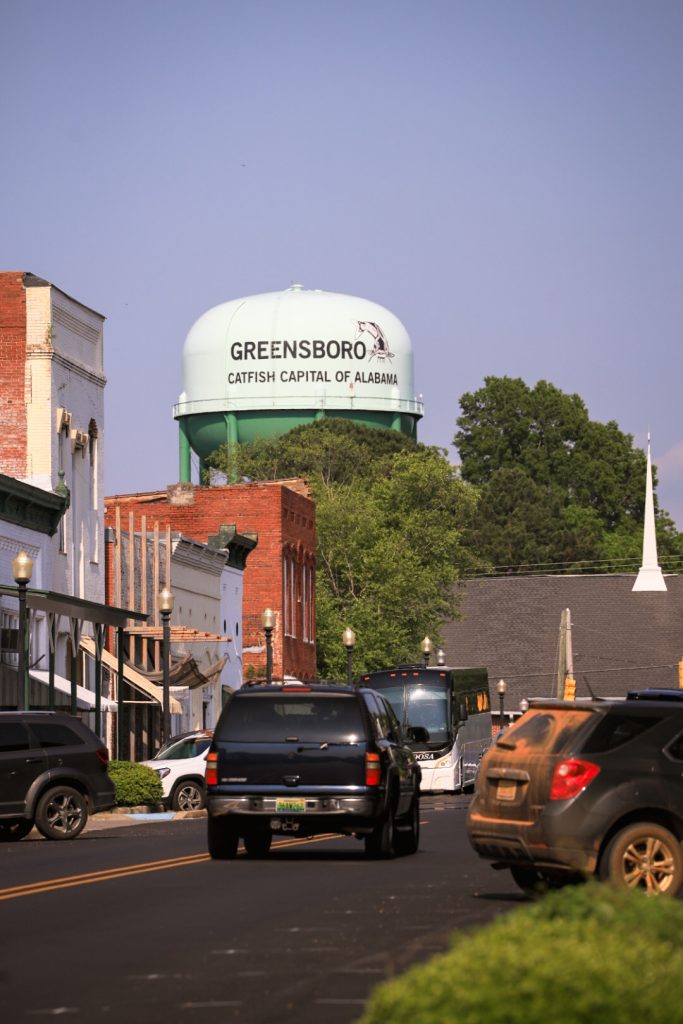
We are also in partnership with the UA HomeFirst Program where we’re working with individuals to build their credit in order to purchase a home. One of the newest things that I’m involved in with the University is our health science technology camp. It’s out of the College of Nursing. We are presently trying to draw students into that program now.”
Said by Lewis
Other panelists discussed challenges and areas for growth in Hale County.
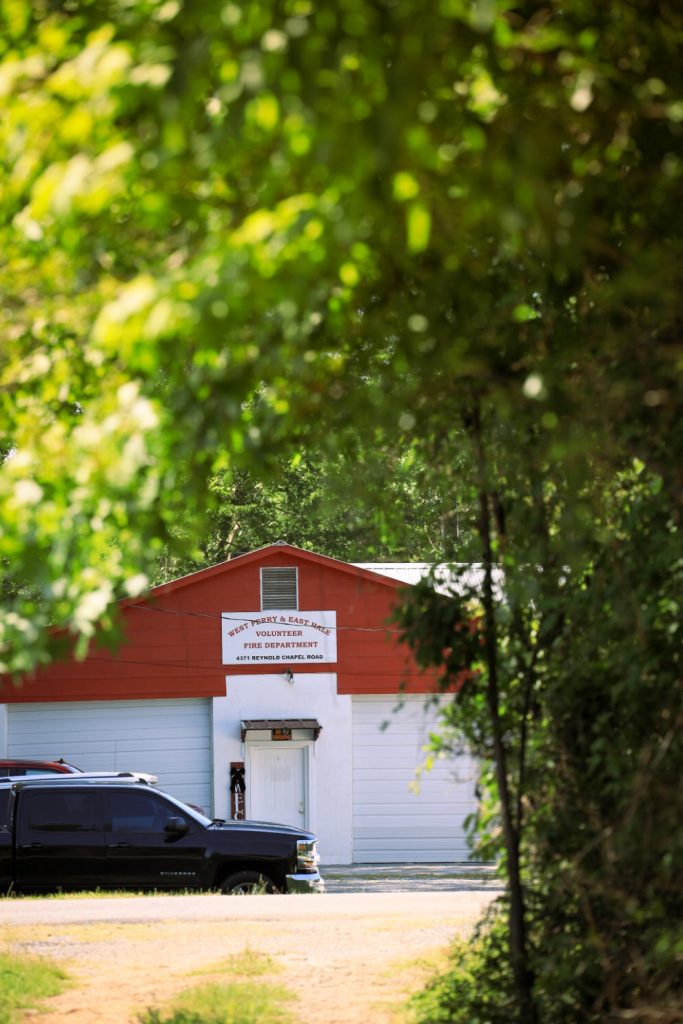
Next, the tour proceeded to Project Horseshoe Farm in Greensboro where Jovita Lewis, Hale County coordinator for cooperative extension, shared the existing partnerships with UA and the Hale County Extension Office.
Newbern, Alabama
We really want to try and have folks focusing more on what our assets are than what our deficits may be, depending on how you look at it, because our assets are the things that are going to make a difference.
Said by site coordinator Llevelyn Rhone
The day concluded with a tour of the Safe House Museum, the home in which Dr. Martin Luther King Jr. sought shelter from the Ku Klux Klan during the civil rights movement.
Group picture in front of the Safe House Black History Museum in Greensboro, Alabama


Day 3 – May 13thPerry, Clarke & Dallas Counties
The group began the final day of the tour at the West Perry Volunteer Fire Department in Perry County.
Emefa Butler, one of the site coordinators and founder of C.H.O.I.C.E. (Choosing to Help Others in our Community Excel), informed the group of many areas for university partnerships in Perry County, such as addressing transportation needs for school choice, increasing community involvement with local schools through school-based projects, medical training in rural health, lack of housing, access to recreation and grant writing.

One of the main issues facing rural communities in the Black Belt is the “brain drain” of young adults leaving these communities for opportunities in bigger cities, which panelists at the second stop in Thomasville debated.
Panel discussion in Thomasville, Alabama
At Selma, the group reconvened at the Selma Dallas County Public Library, which was recently renovated to include a new children’s center, designed in part to address pitfalls of virtual learning for county schoolchildren during the pandemic.
Selma, Alabama

Our job is to bring people together.
Said by Becky Nichols, library director
Bringing people together is also a goal of the Black Belt Community Foundation. Daron Harris, public relations director for the Black Belt Community Foundation, informed attendees of the Truth, Racial Healing and Transformation (TRHT) Selma, a partnership between the Black Belt Community Foundation and Selma Center for Nonviolence that is funded by the Kellogg Foundation.
Other panelists stressed the importance of collaboration in partnerships, highlighting the many ways they work together to address community needs.
Partnership is how we get work done in the Black Belt.
Said by Lydia Chatmon, the director of TRHT Selma and the prevention director of Selma AIR, Inc
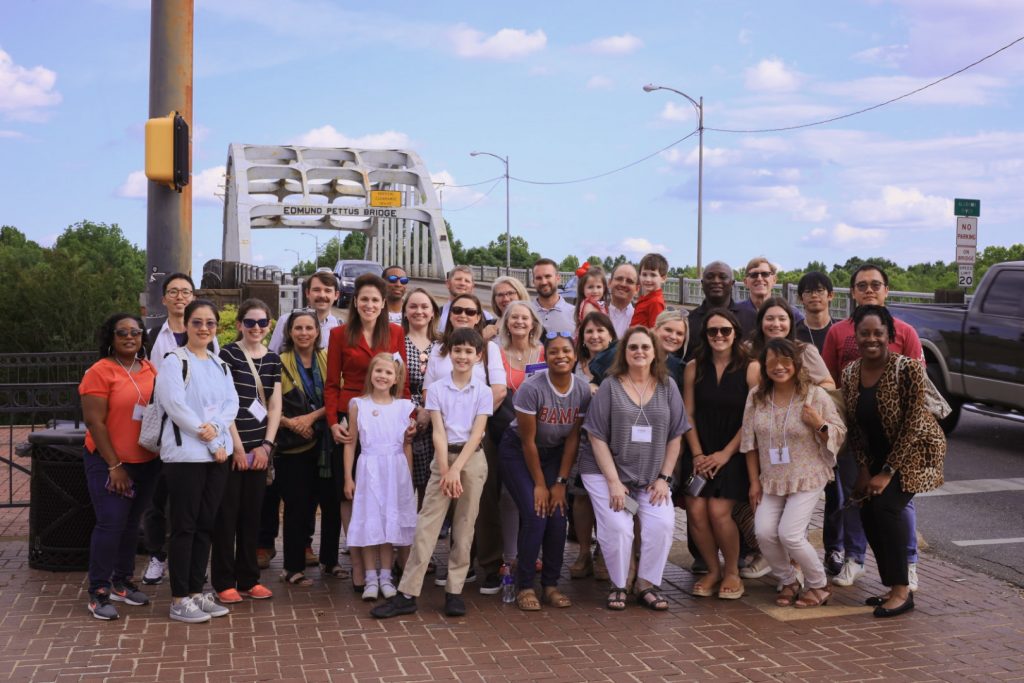
The tour concluded with the group walking across Edmund Pettis Bridge and touring the Civil Rights Memorial Park in Selma before boarding the bus back to Tuscaloosa.
Group picture in front of the Edmund Pettus Bridge in Selma, Alabama
One thing I have learned from these tours and working with the CCBP (Center for Community-Based Partnerships) is that community is how far your reach goes. It’s not just the people around you.
Said by Zahkeira Brown, a CCBP graduate assistant

One thing I have learned from these tours and working with the CCBP (Center for Community-Based Partnerships) is that community is how far your reach goes. It’s not just the people around you. Said by Zahkeira Brown, a CCBP graduate assistant
